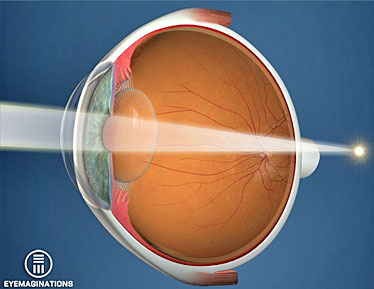Treating Hyperopia (Long Sightedness) With Laser Eye Surgery
If you’re long-sighted, your eyeball is shorter and flatter than it needs to be. That means it focuses the light on a point just behind the retina, creating a blurred image.
What Is Hyperopia?
Hyperopia affects near vision first, and later in life both distance and near vision. Often, if you’re long-sighted, you can sharpen near objects with a conscious effort, which tends to cause headaches.
Long-sightedness is relatively common, affecting about one in four people. Usually, it’s an inherited condition. In fact, nearly all babies start life hyperopic. Their hyperopia tends to reduce as they get older. Those whose hyperopia remains, or develops, will probably be wearing glasses or contact lenses by their mid-twenties – or at least considering it.
Treating Hyperopia With Laser Eye Surgery
Many long-sighted patients find that their eyesight has deteriorated slowly over time. Although this is quite normal, it can be frustrating for someone who grew up with good vision to find they now need glasses to read and perform close work.
We can treat long sightedness with Femto Bladeless LASIK or PRK/TransPRK surgery. That usually means no more glasses, no more fiddly contact lenses, and no more headaches from forcing things into focus.
This can make an enormous difference to everyday life – simple things like showering, swimming or playing with children become easier and less of a worry. And there are obvious benefits for anyone actively involved in sports. Many formerly long-sighted patients also find it helps in social situations, as faces are easier to recognise and read without glasses.
Find out if you are a suitable hyperopia candidate for Laser Eye Surgery at the Smile Laser Eye Clinic Multan.
